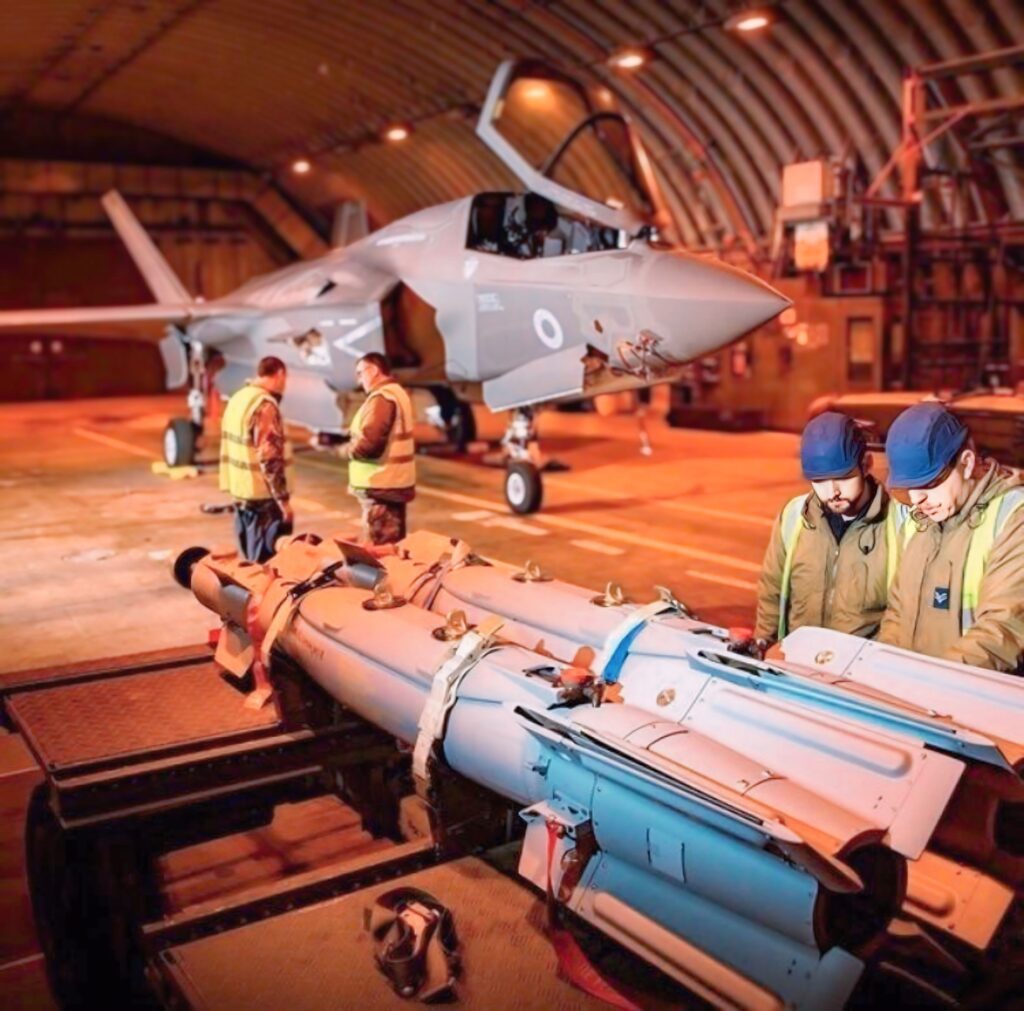
At first glance, the aircraft in the background doesn’t immediately give away its identity. Its sharp angles, blended fuselage, and distinctive single-engine layout suggest a modern stealth fighter, and those features point strongly toward the F-35 Lightning II. Developed by Lockheed Martin, the F-35 has become one of the most recognizable fifth-generation combat aircraft in the world, designed to replace older models such as the F-16, AV-8B Harrier, and F/A-18 Hornet across several allied air forces.
One of the key visual cues that sets the F-35 apart is its shape. The aircraft has a smooth, radar-absorbing skin and a broad, diamond-shaped fuselage that blends almost seamlessly into the wings. Unlike twin-engine jets such as the F-22 Raptor or the Eurofighter Typhoon, the F-35 uses a single Pratt & Whitney F135 engine, which produces enough thrust to push it past Mach 1.6 while also powering the advanced systems onboard. The engine’s large circular exhaust is visible from the rear and is another giveaway when spotting the aircraft from a distance.
The F-35 exists in three main variants, each tailored for different branches of the military. The F-35A is the conventional takeoff and landing version used by air forces. The F-35B is capable of short takeoff and vertical landing, thanks to a lift fan system that allows it to operate from small decks and amphibious assault ships. The F-35C, built for aircraft carrier operations, features a larger wingspan and reinforced landing gear. Even with these differences, they all share the same overall profile, which helps explain why the jet in the background is likely an F-35 regardless of the specific variant.
What makes the F-35 significant isn’t just its appearance, but its role as a “flying sensor network.” Instead of relying on raw speed or maneuverability alone, the aircraft is built to gather, fuse, and share information in real time. Its radar, infrared sensors, and electronic warfare systems allow the pilot to see far beyond visual range, giving a tactical advantage before the enemy even knows the jet is there. This data can also be transmitted to ground units, ships, or other aircraft, making the F-35 as much a node in a network as a traditional fighter.
The jet’s outward design supports that mission. Every line, panel, and angle is shaped to reduce radar reflection. Even the weapons are carried internally to avoid breaking up the stealth profile. When armed for combat, the F-35 can carry air-to-air missiles, precision-guided bombs, and a 25mm cannon, but all of it stays hidden until needed.
So, while several modern jets share a sleek silhouette, the combination of a single engine, stealth shaping, and compact profile makes the F-35 a strong candidate for the aircraft in the background. Whether seen on a ramp, during a flyover, or in a combat zone, it represents the latest step in the evolution of the fighter jet—one where information, stealth, and adaptability matter just as much as speed and firepower.


